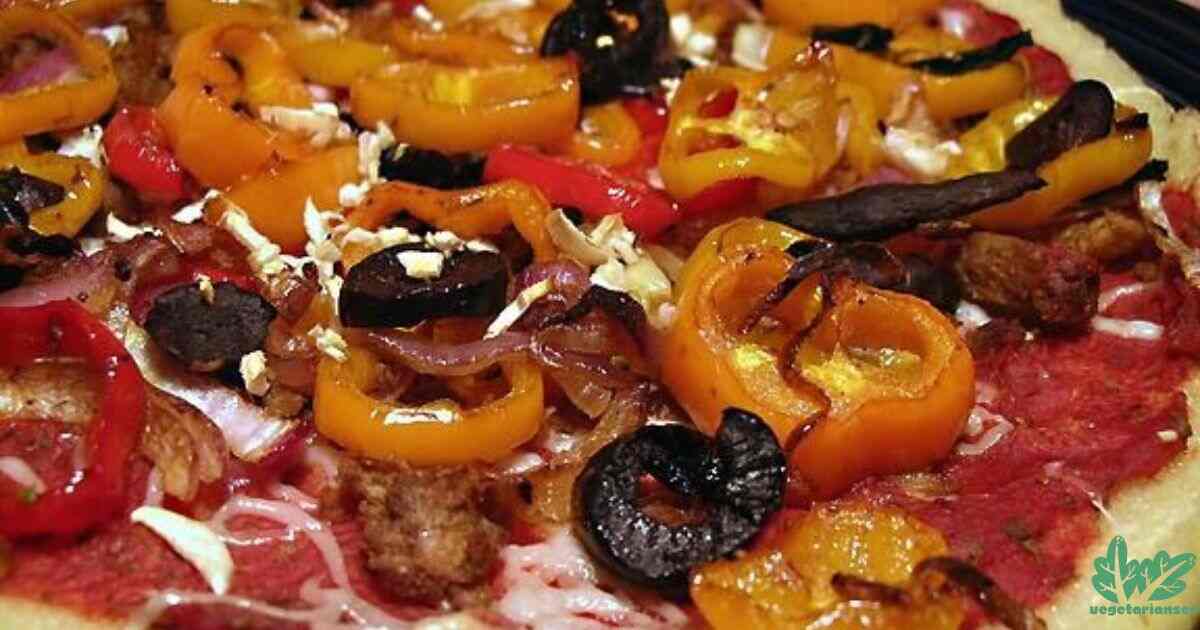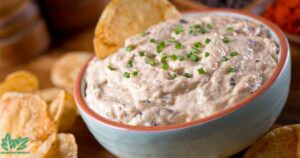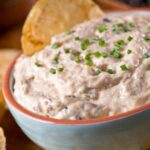Are you tired of the same old pizza crust? Does your homemade pizza lack that special crunch? The solution to your pizza woes might be hiding in your pantry: cornmeal.
Cornmeal pizza crust is the game-changer you’ve been waiting for. It’s not just about the crunch; it’s about elevating your entire pizza experience.
Imagine biting into a slice with a perfectly crisp base that adds a subtle, sweet corn flavor to every bite. That’s the magic of cornmeal in your pizza dough. But how do you achieve this pizza perfection? Don’t worry; we’ve got you covered.
In this comprehensive guide, we’ll walk you through everything you need to know about creating the ultimate crispy pizza dough recipe using cornmeal. Get ready to transform your pizza nights forever!
Cornmeal Pizza Crust
The use of cornmeal in pizza making isn’t a new trend. It’s a technique that’s been around for decades, particularly in certain regions of Italy and the United States. The addition of cornmeal to pizza dough brings a host of benefits that elevate the humble pizza to new heights.
Cornmeal pizza crust offers a unique texture that’s hard to achieve with traditional flour-only doughs. It creates a crispy exterior while maintaining a tender interior.
The cornmeal also imparts a subtle sweetness and nutty flavor that complements a wide range of toppings. Plus, it’s a great way to add some extra fiber and nutrients to your pizza.
What Makes Cornmeal Pizza Crust Special
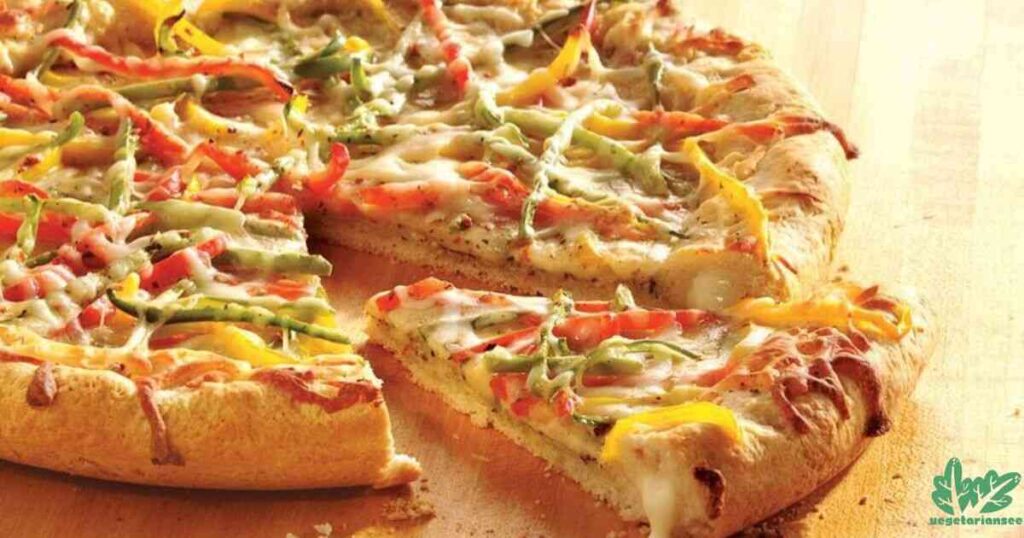
The magic of cornmeal pizza crust lies in its texture and flavor profile. When baked, the cornmeal creates a delightful crunch that contrasts beautifully with the softer toppings. This textural contrast is what sets cornmeal crust apart from its all-flour counterparts.
Nutritionally, cornmeal brings its own benefits to the table. It’s a good source of fiber and contains essential minerals like iron and magnesium. This means your pizza indulgence can come with a side of nutritional value. Who said pizza can’t be part of a balanced diet?
Popular Variations of Cornmeal Pizza Crust
Cornmeal pizza crust isn’t a one-size-fits-all concept. You can find variations ranging from thin and crispy to thick and hearty. Some regions have even made it their signature style. Take Chicago, for instance. Their deep-dish pizzas often feature a cornmeal crust that stands up to layers of toppings.
Whether you prefer a thin crust that shatters with each bite or a thicker base that offers a satisfying chew, there’s a cornmeal crust variation for you. The versatility of cornmeal allows for endless experimentation, making it a favorite among home cooks and professional pizzaiolos alike.
Essential Ingredients for Cornmeal Pizza Crust
Creating the perfect cornmeal pizza crust starts with selecting the right ingredients. Each component plays a crucial role in achieving that ideal texture and flavor. Let’s break down the essentials you’ll need for your homemade pizza dough.
First and foremost, you’ll need fine cornmeal for pizza. This forms the base of your crust’s unique texture. Next, you’ll want a high-quality flour. Many prefer 00 flour for pizza, known for its fine texture. Don’t forget the yeast for pizza dough – it’s what gives your crust its rise and airiness. A pinch of salt enhances flavor, while a touch of sugar feeds the yeast. Lastly, a drizzle of olive oil in pizza dough adds richness and helps achieve that golden-brown crust.
Choosing the Right Cornmeal
When it comes to cornmeal pizza crust, the type of cornmeal you use matters. Fine cornmeal for pizza is often the best choice. It integrates seamlessly into the dough without creating a gritty texture. However, some prefer medium-grind cornmeal for a more pronounced corn flavor and texture.
The choice between yellow and white cornmeal is largely aesthetic. Yellow cornmeal will give your crust a golden hue, while white cornmeal results in a paler crust. Both offer similar flavors, so choose based on your visual preference or what’s available in your local store.
Flour Selection for Cornmeal Pizza Crust
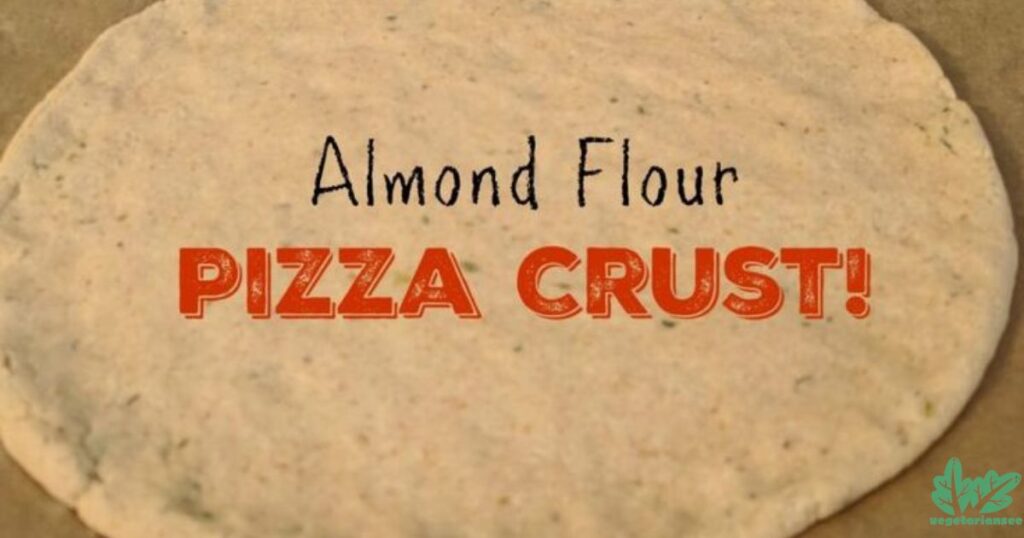
While cornmeal is the star, the type of flour you use in your pizza dough with cornmeal is equally important. Many pizza enthusiasts swear by 00 flour for pizza. This finely ground Italian flour creates a smooth, elastic dough that’s easy to work with.
If you can’t find 00 flour, bread flour is a great alternative. It has a higher protein content than all-purpose flour, which results in a chewier crust. For those with gluten sensitivities, there are gluten-free flour blends specifically designed for pizza making. These can be combined with cornmeal for a gluten pizza dough that doesn’t compromise on taste or texture.
Yeast and Leavening Agents
The rise and texture of your cornmeal pizza crust largely depend on the leavening agent you use. Yeast for pizza dough is the most common choice. Active dry yeast and instant yeast are both suitable, with instant yeast being slightly more convenient as it doesn’t need to be proofed before use.
For those interested in natural leavening, a sourdough starter can be used in place of commercial yeast. This method requires more time but can result in a more complex flavor profile. Whichever method you choose, proper pizza dough rising is crucial for achieving that perfect balance of crunch and chew in your cornmeal crust.
Mastering the Cornmeal Pizza Crust Recipe
Now that we’ve covered the ingredients, let’s dive into the process of making cornmeal pizza crust. This crispy pizza dough recipe will guide you through each step, ensuring you end up with a perfect base for your favorite toppings.
Start by combining your dry ingredients – flour, cornmeal, salt, and if using, sugar. In a separate bowl, activate your yeast in warm water. Once frothy, add this to your dry mix along with a drizzle of olive oil. Mix until a shaggy dough forms, then turn it out onto a floured surface for kneading. The pizza dough preparation process is crucial for developing gluten and incorporating air, which will give your crust its structure and flavor.
Mixing the Cornmeal Pizza Dough
The key to a great cornmeal pizza crust lies in the mixing process. You want to achieve a dough that’s smooth, elastic, and not too sticky. Start by incorporating the wet ingredients into the dry until a rough dough forms. Then, it’s time to knead.
Hand-kneaded pizza dough develops a unique texture that many prefer. Knead for about 10 minutes, or until the dough is smooth and springs back when poked. If you’re using a stand mixer, mix on medium speed for 5-7 minutes. The goal is to fully integrate the cornmeal and develop the gluten in the flour for a strong, flexible dough.
Resting and Fermentation
After kneading, your cornmeal pizza crust dough needs time to rest and ferment. This process, known as pizza dough rising, is crucial for flavor development and texture. Place your dough in a lightly oiled bowl, cover it with a damp cloth, and let it rise in a warm spot for about an hour, or until doubled in size.
For even better flavor, consider a cold fermentation. After the initial rise, punch down the dough and refrigerate it for 24 to 72 hours. This slow fermentation allows for more complex flavors to develop, resulting in a truly artisan pizza dough.
Troubleshooting Common Dough Issues
Even experienced bakers sometimes encounter issues with their cornmeal pizza crust. If your dough is too sticky, gradually add more flour during kneading. If it’s too dry, a splash of water can help. Remember, humidity and altitude can affect your dough, so don’t be afraid to adjust as needed.
If your dough isn’t rising, check the expiration date on your yeast. Old yeast won’t activate properly. Also, ensure your water isn’t too hot when activating the yeast – aim for around 110°F (43°C). With these troubleshooting tips, you’ll be able to create perfect pizza dough with cornmeal every time.
Shaping and Forming Cornmeal Pizza Crust
Once your cornmeal pizza crust dough has risen, it’s time to shape it. This step is crucial in determining the final texture of your pizza. Whether you’re aiming for a thin crust pizza dough or something a bit thicker, the technique remains similar.
Start by gently deflating your risen dough. Divide it if you’re making multiple pizzas. On a lightly floured surface, use your hands to press the dough into a disc. From here, you can either continue pressing with your hands or use a rolling pin for a more uniform thickness. Remember, the cornmeal texture in pizza will become more pronounced as you stretch the dough thinner.
Hand-Stretching vs. Rolling
Both hand-stretching and rolling have their merits when it comes to shaping cornmeal pizza crust. Hand-stretching allows for more air retention in the dough, resulting in a lighter crust with more bubbles. It’s the preferred method for Italian pizza dough.
Rolling, on the other hand, creates a more uniform thickness, which can be desirable for certain styles of pizza. It’s particularly useful for thin crust pizza dough. Whichever method you choose, be gentle with the dough to avoid tearing. The cornmeal in the dough makes it slightly more delicate than traditional pizza dough.
Creating the Perfect Pizza Base
The final step in shaping your cornmeal pizza crust is creating the perfect base for your toppings. If you like a pronounced crust edge, leave a slightly thicker border around the rim of your pizza. For a truly crispy base, consider par-baking your crust for a few minutes before adding toppings.
Remember, the thickness of your base will affect baking time. A thinner crust will cook faster and be crispier, while a thicker base will take longer to cook through but offer more chew. Experiment to find your perfect balance of pizza crust texture.
Baking Methods for Cornmeal Pizza Crust
The baking process is where your cornmeal pizza crust truly comes to life. The high heat of the oven causes the cornmeal to crisp up, creating that signature texture we’re after. There are several methods you can use, each offering its own benefits.
Conventional ovens work well, especially when used with a pizza stone or steel. These tools help mimic the intense bottom heat of a professional pizza oven. For those lucky enough to have one, a dedicated pizza oven can produce spectacular results. And don’t overlook your outdoor grill – it can create a wonderfully charred crust that’s hard to achieve indoors.
Oven-Baking Cornmeal Pizza Crust
For most home cooks, the regular oven is the go-to for baking pizza at home. To get the best results with your cornmeal pizza crust, preheat your oven to its highest setting, usually around 500°F (260°C). If you have a convection oven pizza setting, use it – the circulating air helps create an even, crispy crust.
A pizza stone or steel is a worthwhile investment. Preheat it with your oven for at least 30 minutes before baking. This ensures a blast of bottom heat that will crisp up your crust beautifully. Slide your topped pizza onto the hot stone and bake for 10-15 minutes, or until the crust is golden and the cheese is bubbly.
Pizza Oven Techniques for Cornmeal Crust
If you’re serious about pizza, you might consider investing in a dedicated pizza oven. These can reach much higher temperatures than regular ovens, often over 900°F (482°C). This intense heat is perfect for cornmeal pizza crust, creating a wonderfully crisp exterior in just a few minutes.
When using a pizza oven, your pizza baking temperature will be much higher, and your cooking time much shorter – often just 60-90 seconds. Keep a close eye on your pizza and rotate it frequently for even cooking. The result is a perfectly crisp crust with a slight char that enhances the cornmeal’s flavor.
Grilling Cornmeal Pizza Crust
Grilling is an excellent method for cooking cornmeal pizza crust, especially in the summer months when you don’t want to heat up your kitchen. The high heat of a grill can mimic a pizza oven, creating a crispy, slightly charred crust.
To grill your pizza, heat your grill to high. Brush one side of your shaped dough with olive oil and place it oiled-side down on the grill.
Cook for 2-3 minutes until grill marks appear, then flip. Quickly add your toppings to the grilled side and close the lid. Cook for another 3-5 minutes until the cheese melts and the bottom is crispy.
Topping Ideas for Crispy Cornmeal Pizza
Now that you’ve mastered the art of cornmeal pizza crust, it’s time to talk toppings. The unique flavor and texture of cornmeal crust open up a world of possibilities when it comes to pizza topping ideas. The key is to balance flavors that complement the subtle sweetness of the cornmeal.
Classic toppings like tomato sauce, mozzarella, and basil work beautifully with cornmeal crust. But don’t be afraid to get creative.
Think about toppings that play well with corn flavors – grilled vegetables, barbecue chicken, or even a Mexican-inspired pizza with black beans and cilantro. The sturdy nature of cornmeal pizza crust means it can handle heartier toppings without getting soggy.
Traditional Toppings for Cornmeal Crust
Even with its unique base, cornmeal pizza crust pairs wonderfully with traditional pizza toppings. A classic Margherita – with fresh mozzarella, tomatoes, and basil – allows the flavor of the crust to shine through.
For meat lovers, a combination of Italian sausage, pepperoni, and ham creates a satisfying contrast to the slightly sweet crust.
Don’t forget about vegetables. Roasted bell peppers, onions, and mushrooms not only add nutrition but also complex flavors that complement the cornmeal.
A white pizza with ricotta, garlic, and spinach can be a delightful change of pace, allowing the cornmeal flavor to take center stage.
Gourmet Topping Combinations
For those looking to elevate their cornmeal pizza crust experience, consider some gourmet topping combinations.
A fig and prosciutto pizza with a drizzle of balsamic glaze plays beautifully with the sweet notes in the crust. Or try a butternut squash and sage pizza for a fall-inspired treat.
Seafood lovers might enjoy a shrimp and pesto pizza, with the cornmeal providing a satisfying textural contrast. For a truly unique experience, consider a dessert pizza.
A spread of mascarpone topped with fresh berries and a drizzle of honey can turn your cornmeal pizza crust into a showstopping finale to any meal.
Read This Blog: What to Serve with Chicken Piccata: 18 Mouthwatering Side Dishes
Vegetarian and Vegan Options
Cornmeal pizza crust is naturally vegetarian, making it a great base for vegetarian pizza recipes. Load it up with grilled vegetables like zucchini, eggplant, and bell peppers for a Mediterranean-inspired pie.
A combination of caramelized onions, goat cheese, and arugula offers a sophisticated flavor profile.
For vegan options, skip the cheese or use a plant-based alternative. A pizza topped with hummus, roasted chickpeas, and fresh herbs can be a protein-packed meal. Or try a Mexican-inspired pizza with refried beans, corn, avocado, and cilantro.
The possibilities for vegetarian pizza topping ideas are endless with a cornmeal pizza crust as your canvas.
Serving and Enjoying Cornmeal Pizza Crust
The moment has arrived – your cornmeal pizza crust is baked to perfection and loaded with your favorite toppings. But how you serve and enjoy your creation can elevate the experience even further. Let’s explore some tips for presenting and savoring your homemade pizza.
Also Read This Blog: Canned Salmon Fried Rice Recipe: A Quick and Nutritious Meal for Busy Days
First, let your pizza rest for a few minutes after it comes out of the oven. This allows the cheese to set slightly and makes slicing easier. Use a sharp pizza cutter or large chef’s knife for clean cuts.
For a rustic look, consider serving your pizza on a wooden board. Pair your pizza with a crisp salad and a glass of wine for a complete meal. Remember, cornmeal pizza crust is versatile enough to work with both casual and upscale dining settings.
Storing and Reheating Cornmeal Pizza
While fresh is best, sometimes you end up with leftover pizza. The good news is that cornmeal pizza crust reheats beautifully. Store any
leftover slices in an airtight container in the refrigerator for up to 3 days. When you’re ready to enjoy them again, reheat in a preheated oven at 375°F (190°C) for about 10 minutes. This method helps maintain the crispy pizza dough texture better than microwaving.
For longer storage, you can freeze your cornmeal pizza crust. Wrap individual slices tightly in plastic wrap and then aluminum foil before freezing.
They’ll keep well for up to 2 months. To reheat, thaw in the refrigerator overnight and then follow the oven reheating method mentioned above.
Health Aspects of Cornmeal Pizza Crust
In today’s health-conscious world, even indulgences like pizza are scrutinized for their nutritional value. Fortunately, cornmeal pizza crust offers some advantages over traditional all-wheat crusts.
Cornmeal is naturally gluten-free, making it a good option for those with gluten sensitivities when paired with gluten-free flour.
Cornmeal is also a good source of fiber and contains essential minerals like iron, magnesium, and zinc. It has a lower glycemic index than white flour, which means it can help maintain steadier blood sugar levels.
However, it’s important to remember that pizza, regardless of the crust, should be enjoyed in moderation as part of a balanced diet.
Scaling Up: Cornmeal Pizza Crust for Larger Batches
Whether you’re hosting a pizza party or meal prepping for the week, scaling up your cornmeal pizza crust recipe is straightforward.
Simply double or triple the ingredients, maintaining the same ratios. Keep in mind that larger batches may require slightly longer kneading times to fully develop the gluten.
When making multiple pizzas, consider par-baking the crusts. This involves partially baking the crust for about 5 minutes before adding toppings.
Par-baked crusts can be cooled, wrapped, and refrigerated or frozen for later use. This method is perfect for busy weeknights or when entertaining, as you can quickly assemble and finish baking pizzas as needed.
Frequently Asked Question
As with any culinary endeavor, questions often arise when making cornmeal pizza crust. Here are answers to some frequently asked questions to help you achieve pizza perfection every time.
Can I make cornmeal pizza crust gluten-free?
Yes, you can make a gluten-free cornmeal pizza crust. Cornmeal itself is gluten-free, so you’ll need to pair it with a gluten-free flour blend designed for baking.
Look for blends that include ingredients like rice flour, tapioca starch, and xanthan gum for best results. Keep in mind that gluten-free doughs may have a different texture and may require adjustments in liquid ratios.
How does cornmeal affect the pizza’s nutritional value?
Cornmeal pizza crust generally has a higher fiber content compared to traditional all-wheat crusts. It also provides essential minerals like iron and magnesium.
Cornmeal has a lower glycemic index than white flour, which can be beneficial for blood sugar management. However, the overall nutritional value of your pizza will depend largely on the toppings you choose.
What’s the best way to achieve a crispy cornmeal pizza crust?
To achieve the crispiest cornmeal pizza crust, start with a hot oven – at least 450°F (230°C), but preferably higher. Use a preheated pizza stone or steel if possible.
Roll your dough thin for maximum crispiness. Consider par-baking the crust for a few minutes before adding toppings, especially if you’re using wet ingredients. Lastly, don’t overload your pizza with toppings, as this can lead to a soggy crust.
Conclusion
Cornmeal pizza crust offers a delightful twist on traditional pizza. Its unique texture and flavor profile open up a world of culinary possibilities.
Whether you’re a pizza aficionado looking to expand your repertoire or a home cook seeking to elevate your pizza game, cornmeal crust is worth exploring.
With the tips and techniques outlined in this guide, you’re well-equipped to create delicious, crispy pizzas that will impress family and friends alike. So fire up that oven, roll out that dough, and get ready to enjoy pizza like never before!

Ethan Henry with 8 years of expertise in bamboo, excels in sustainable design, construction and product development. His passion for eco-friendly solutions has driven innovative advancements in bamboo-based industries.
